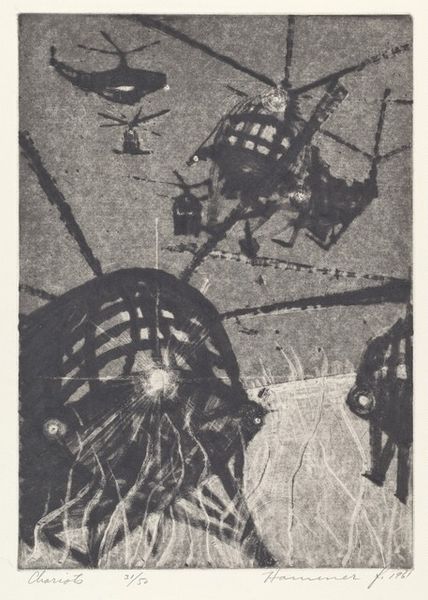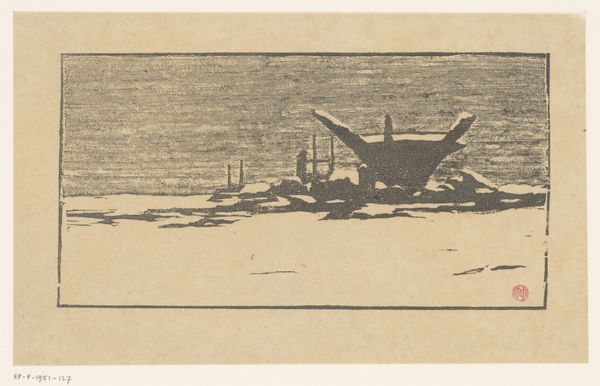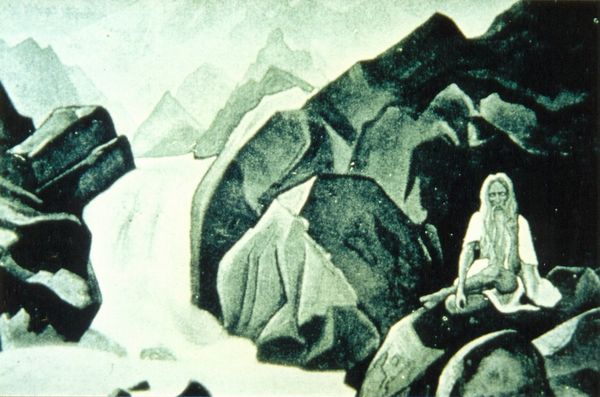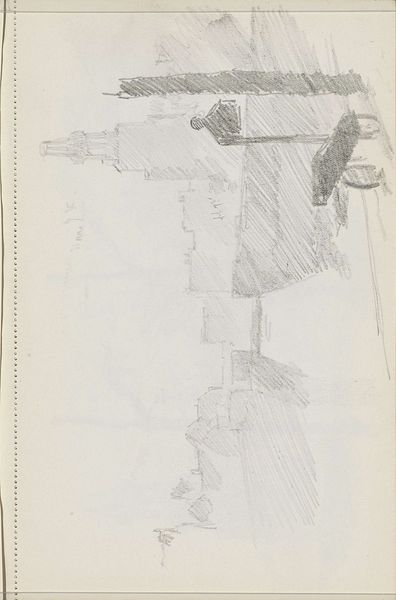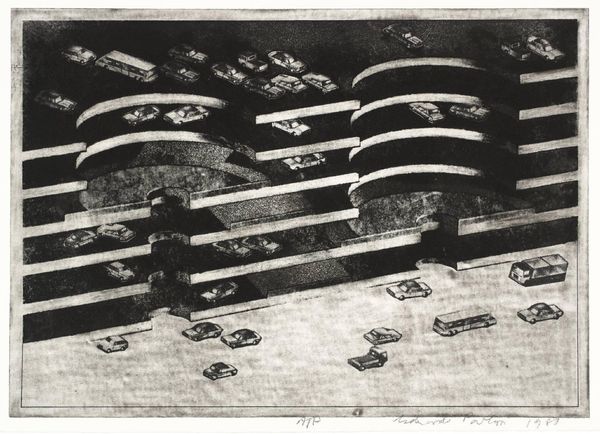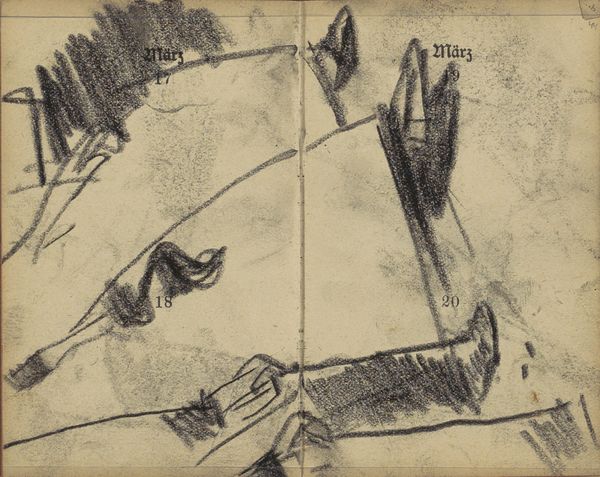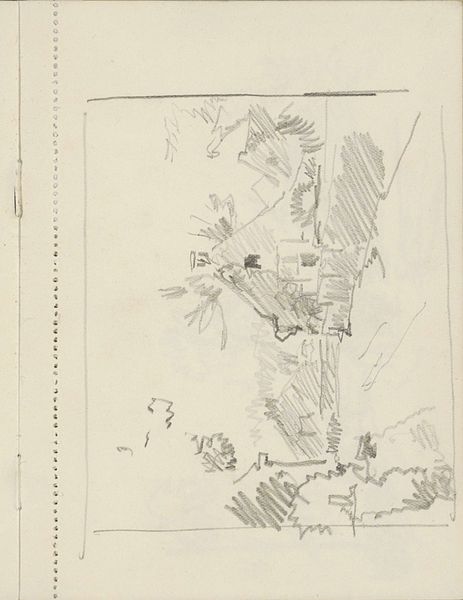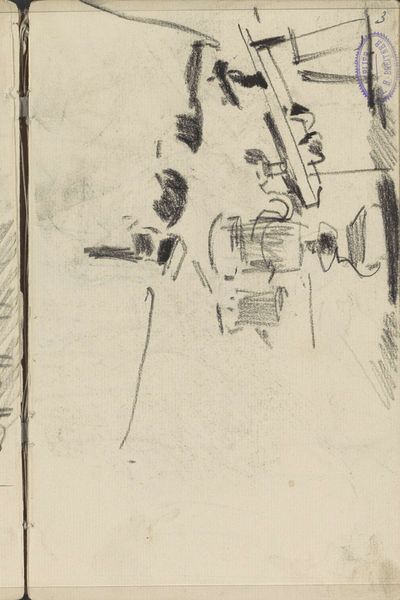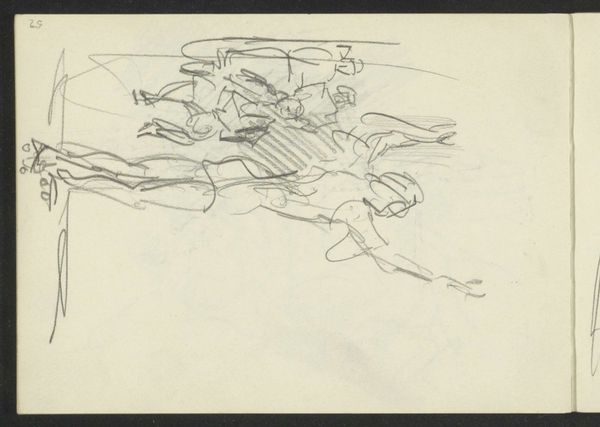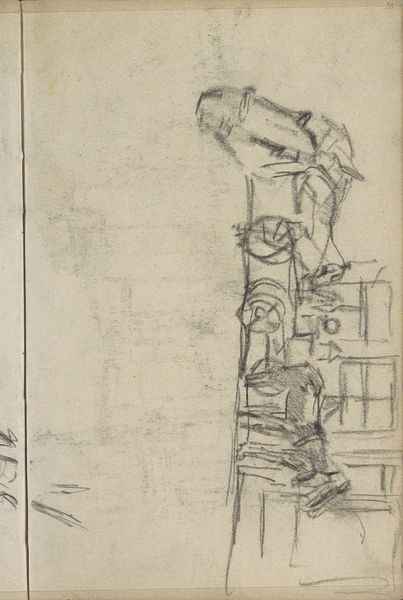
drawing, pencil
#
drawing
#
landscape
#
geometric
#
pencil
#
symbolism
Copyright: Public domain
Curator: The pencil drawing before us is an Untitled landscape created by Nicholas Roerich in 1916. Editor: What immediately strikes me is the stark contrast, the severe geometry of the buildings and the soft curves of the landscape—a dreamscape in monochromatic tones. Curator: Indeed. Roerich, deeply influenced by Symbolism, often employed landscapes to evoke spiritual themes. This drawing likely reflects his interest in the mythical and ancient, potentially drawing from his extensive travels in Russia and beyond. Editor: The composition leads my eye toward that central cluster of structures—it's like a fortified, almost celestial city perched atop a mountainous base. The limited tonal range really emphasizes form and the texture, making the scene seem both ethereal and grounded. Curator: It’s interesting to note Roerich’s activity during 1916. Amidst the turmoil of World War I, he became involved in public life, advocating for the preservation of cultural artifacts. This drawing could represent a search for permanence amidst chaos. Perhaps a symbolic depiction of the enduring human spirit. Editor: Look how those dark, curving lines at the bottom lead your eye. They give a strange, almost biomorphic feel to what's otherwise a very constructed scene. It softens those harsher angles quite nicely. It's an elegant, thoughtful design in its balance. Curator: I see the composition, then, working in concert with the historical context to evoke this symbolic meaning and his deep, underlying belief in preserving humanity's cultural heritage during times of war. Editor: Ultimately, what captivates me here is Roerich's deft manipulation of tone and form—a potent and enduring quality in any artistic vision. Curator: Precisely, the confluence of historical circumstance and symbolist ideals created something incredibly evocative.
Comments
No comments
Be the first to comment and join the conversation on the ultimate creative platform.
